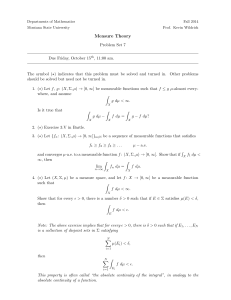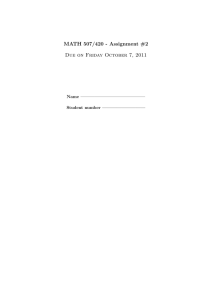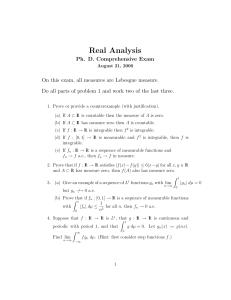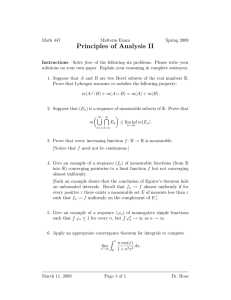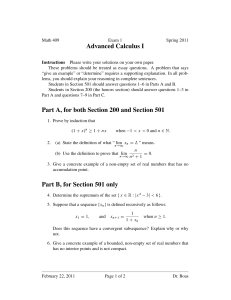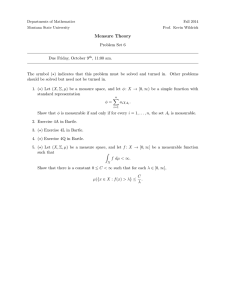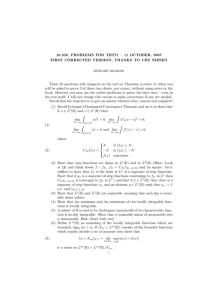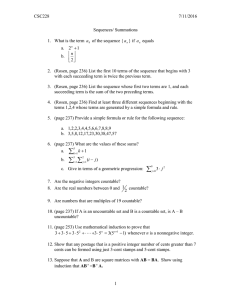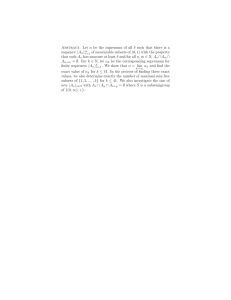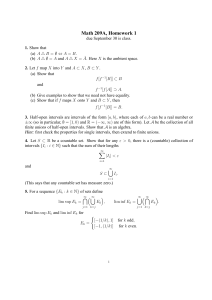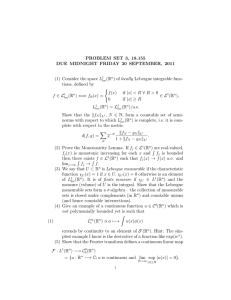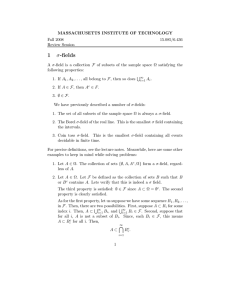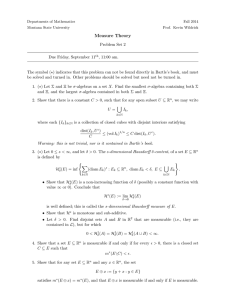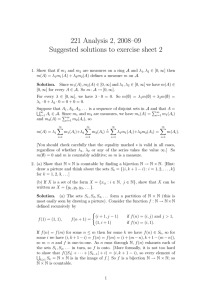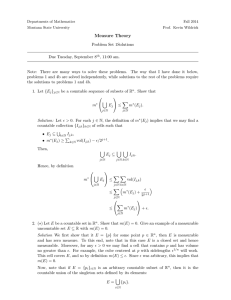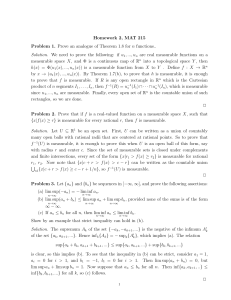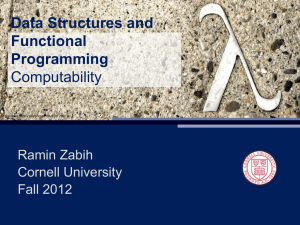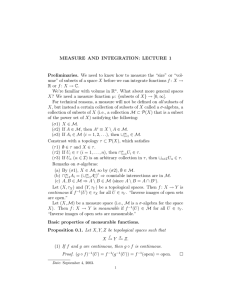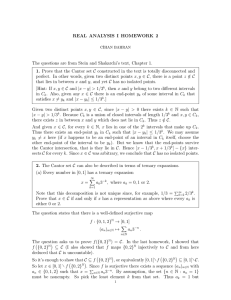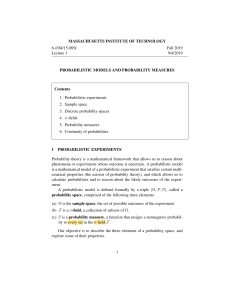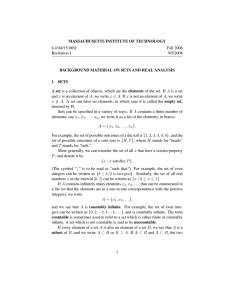Measure Theory
advertisement
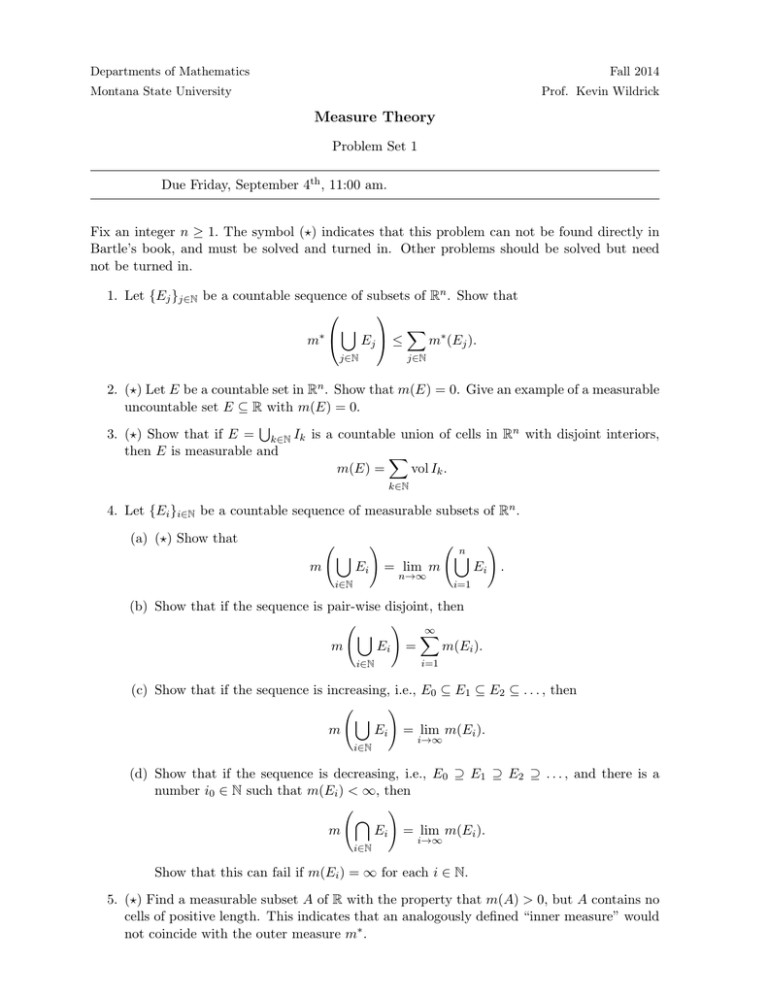
Departments of Mathematics
Fall 2014
Montana State University
Prof. Kevin Wildrick
Measure Theory
Problem Set 1
Due Friday, September 4th , 11:00 am.
Fix an integer n ≥ 1. The symbol (?) indicates that this problem can not be found directly in
Bartle’s book, and must be solved and turned in. Other problems should be solved but need
not be turned in.
1. Let {Ej }j∈N be a countable sequence of subsets of Rn . Show that
[
X
m∗
Ej ≤
m∗ (Ej ).
j∈N
j∈N
2. (?) Let E be a countable set in Rn . Show that m(E) = 0. Give an example of a measurable
uncountable set E ⊆ R with m(E) = 0.
S
3. (?) Show that if E = k∈N Ik is a countable union of cells in Rn with disjoint interiors,
then E is measurable and
X
m(E) =
vol Ik .
k∈N
4. Let {Ei }i∈N be a countable sequence of measurable subsets of Rn .
(a) (?) Show that
!
m
[
Ei
i∈N
= lim m
n→∞
n
[
!
Ei
.
i=1
(b) Show that if the sequence is pair-wise disjoint, then
!
∞
[
X
m
Ei =
m(Ei ).
i∈N
i=1
(c) Show that if the sequence is increasing, i.e., E0 ⊆ E1 ⊆ E2 ⊆ . . . , then
!
[
m
Ei = lim m(Ei ).
i∈N
i→∞
(d) Show that if the sequence is decreasing, i.e., E0 ⊇ E1 ⊇ E2 ⊇ . . . , and there is a
number i0 ∈ N such that m(Ei ) < ∞, then
!
\
m
Ei = lim m(Ei ).
i∈N
i→∞
Show that this can fail if m(Ei ) = ∞ for each i ∈ N.
5. (?) Find a measurable subset A of R with the property that m(A) > 0, but A contains no
cells of positive length. This indicates that an analogously defined “inner measure” would
not coincide with the outer measure m∗ .
